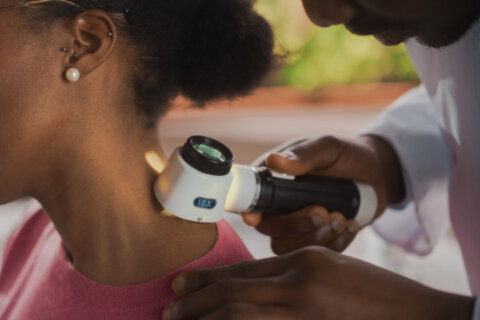WASHINGTON — The mass shooting in Oregon is once again putting a spotlight on mental health issues and problems with the treatment process.
Insurance companies are required to provide mental health coverage, but big inconsistencies remain regarding access to care.
During Mental Illness Awareness Week, observed each year on the first week of October, there is a push to get the word out about the toll mental illness is taking on this country and the need for support of friends, family and strangers in need of treatment.
“One could make the argument that untreated mental illness is one of the great public health crises that we are facing in the country today,” says Ron Honberg, director of policy and legal affairs for NAMI — the National Alliance on Mental Illness.
The problem, he says, is that mental illness is often only focused upon after tragedies occur — what is really needed is a sustained effort to reform the system.
According to the National Institute of Mental Health, roughly one in five Americans will experience a mental health problem in any given year. For 7 percent of the population, the affects will be debilitating.
A mental health parity law that took effect in 2008 requires insurers to cover mental illness to the same extent that they cover other medical conditions, such as heart disease or diabetes.
Honberg says affordability is not the problem as much as accessibility.
“The reality is that half of all people with serious mental illness in this country have no access to any sort of treatment at all,” says Honberg, emphasizing that in many communities there is a shortage of both facilities and trained mental health care professionals.
Another problem is attitudes, since the stigmas and stereotypes surrounding mental illness can dissuade those in trouble from asking for help.
This is especially true after incidents like the mass shooting Oct. 1 at Umpqua Community College in Roseburg, Oregon, he says.
Honberg says even though studies show very little correlation between mental illness and violence, these cases “reinforce stigmas and erect greater barriers to participating in treatment for people fearing that they might be ostracized.”
But Honberg says he sees signs of hope. New treatment options are slowly becoming available that identify problems before they reach crisis levels. At the same time, Congress is working on bipartisan legislation to improve access to care.
Perhaps just as important is a generational shift in attitudes.
This year, NAMI is using social media to reach a new generation during Mental Illness Awareness Week. Honberg says young people are “much more open to diversity and much more supportive of people around them who are experiencing problems and behaving differently.”







